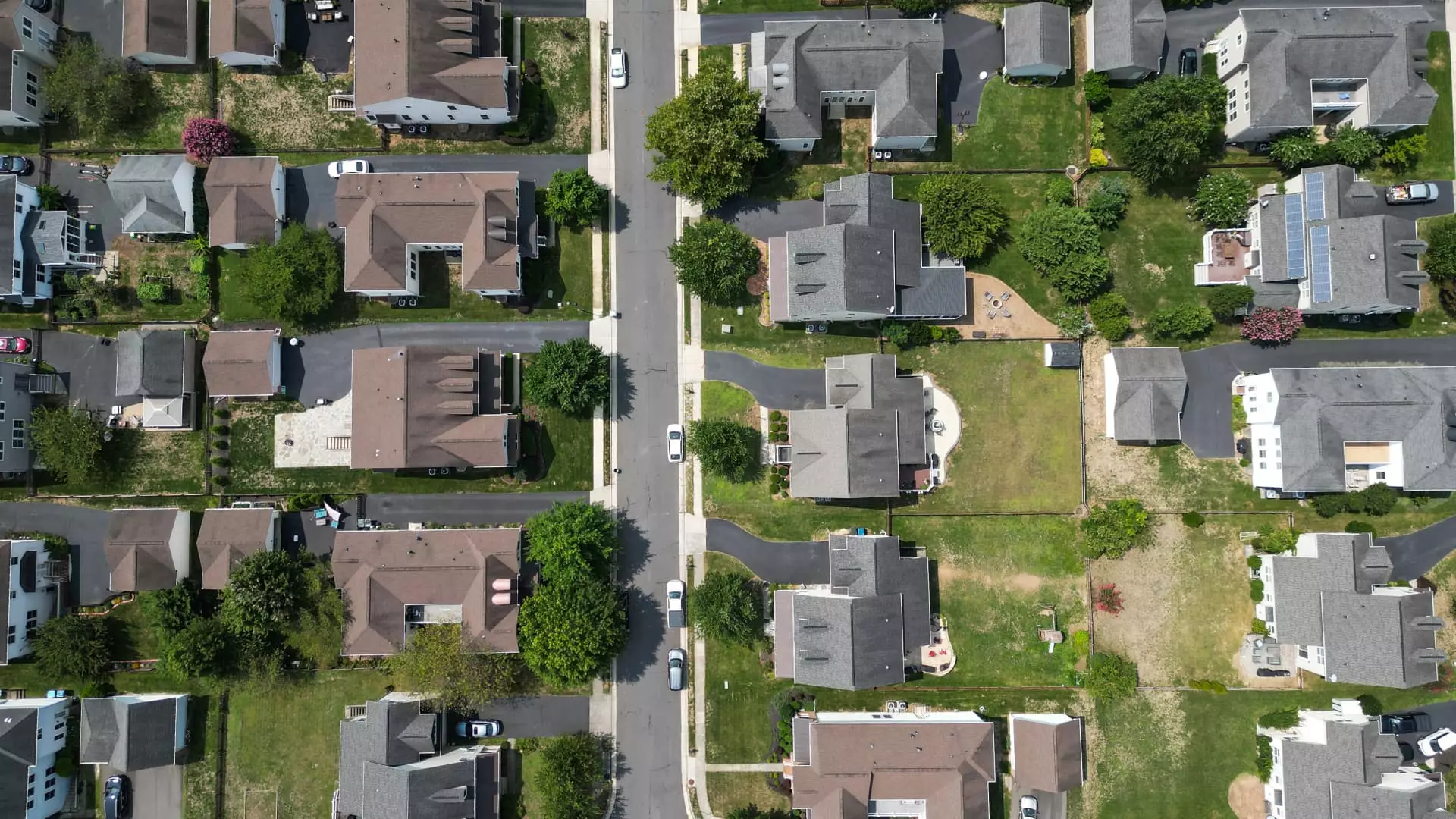In a dramatic twist reminiscent of a roller coaster, mortgage rates recently soared to their highest levels in over a month. The average rate for a 30-year fixed mortgage leapt a staggering 22 basis points, followed by an additional 3 basis points just days later, landing at a striking 6.85%. This sharp uptick abruptly erased last week’s temporary decline, a situation akin to a pendulum swinging violently after being pushed one way only to snap back harder. What drives these erratic changes in mortgage rates? The answer lies deeper than mere statistics; it reflects the anxiety and uncertainty lurking within the broader economic landscape.
The Reaction to Global Turbulence
The immediate cause of last week’s mortgage rate decline can be traced to President Trump’s announcement of global tariffs. Such declarations not only sent shockwaves through the stock market, prompting investors to seek refuge in bonds, but they also introduced a crippling sense of instability. Matthew Graham, chief operating officer at Mortgage News Daily, aptly characterized the situation as a “knee-jerk reaction.” This pattern of economic panic reveals a sobering truth: our financial systems are painfully intertwined, where one shock leads to cascading effects across various markets.
The brief respite offered by falling mortgage rates allowed for flickers of hope among housing watchers, optimistic about spurring a lackluster spring market. However, this glimmer was snuffed out by the stark reality of rising home prices and wavering consumer confidence. Homebuyers have entered a perilous juggling act, struggling to maintain a grip on their finances while contending with ominously high costs, dwindling job security, and general economic unease.
The Cautionary Tale of Home Sales
Interestingly, the most notable decline in mortgage rates earlier this year happened in January and February, when rates dropped from 7.26% to 6.74%. Despite this welcomed relief, home sales exhibited only a marginal uptick. The National Association of Realtors reported a meager 2% increase in pending home sales from January to February, a sign that something is deeply amiss. While the modest increase might suggest a positive trend, these figures remain well below historical standards. It’s not just about affordability; it speaks volumes about the crisis of confidence enveloping potential buyers.
Lawrence Yun, NAR’s chief economist, states that a significant decline in mortgage rates could ameliorate both demand and supply. The power of the so-called mortgage rate lock-in effect keeps homeowners tethered to their current properties, fearing they may not find a better deal in this volatile landscape. As rates continue their tumultuous dance, the options available to buyers grow increasingly fragile.
The Plate Spinning of Economic Indicators
As we inch closer to pivotal economic reports like the consumer price index and producer price index, market watchers brace themselves for yet another round of frenetic activity. The intricate relationship between mortgage rates and these indicators cannot be overstated. Each new piece of data has the potential to alter market sentiment drastically, creating a cycle of speculation and fear. Will rates swing back downward and inspire buyers to re-enter the market, or will they soar higher, putting homeownership further out of reach for many?
The real estate sector operates under the shadow of numerous external pressures, often elevating the stakes for both buyers and sellers. With a complex interplay of global uncertainties and domestic economic conditions, mortgage rates are anything but simple figures. They represent a broader narrative, one filled with challenges, optimism, and the potential for transformative change within the housing market.
The Performance Paradox of the Spring Housing Season
As the spring housing season unfolds, the contrast between the behavior of mortgage rates and housing market dynamics is striking. While there is a hopeful increase in the number of homes for sale, the prevailing high costs associated with purchasing property seem only to stifle buyer engagement. Economists warn that unless buyers perceive a clear path toward affordability, interest in the housing market will remain tepid at best.
It’s a harsh reality for many families and individuals aspiring to homeownership, trapped in a world where dreams can easily be overshadowed by inflated prices and fluctuating interest rates. This paradox underscores a pressing need for policy changes and innovative strategies to stabilize and invigorate the housing market. It is only through proactive measures that we can hope to foster a climate conducive to both buyer confidence and robust economic growth.
The complexities surrounding today’s mortgage rates serve as a reminder of the delicate balance required to navigate the financial landscape. Each twist and turn echoes the larger economic narrative, where uncertainties and decisions shape the future for millions navigating the arduous process of homeownership.

